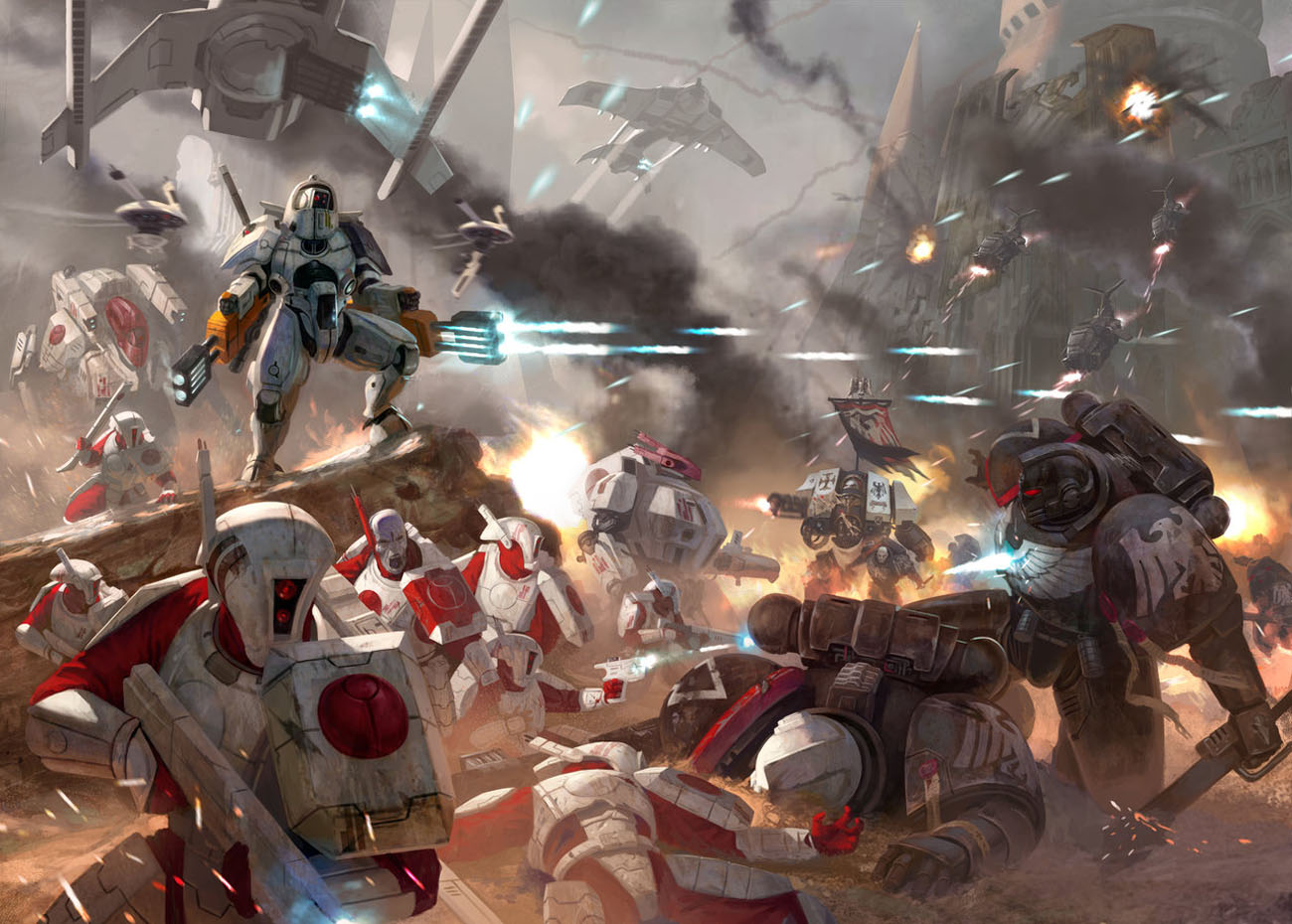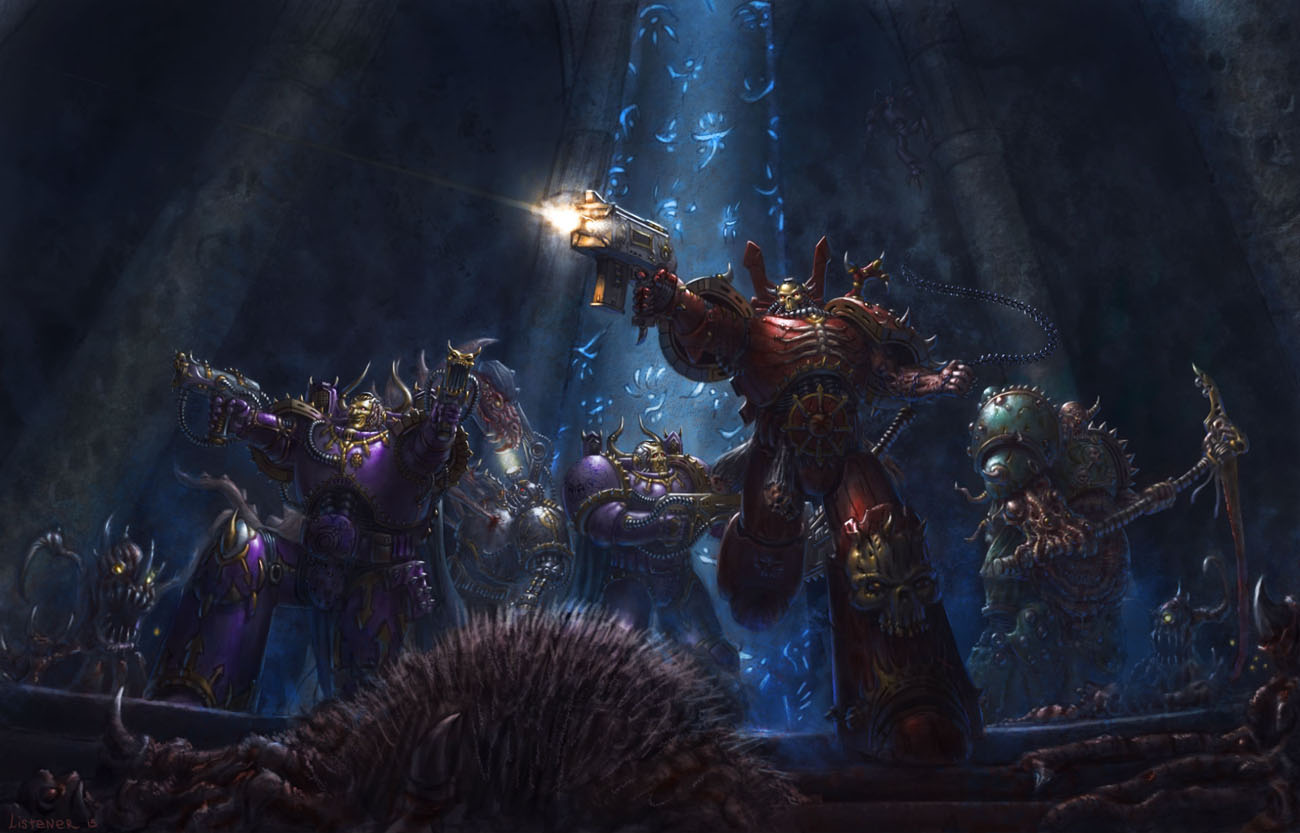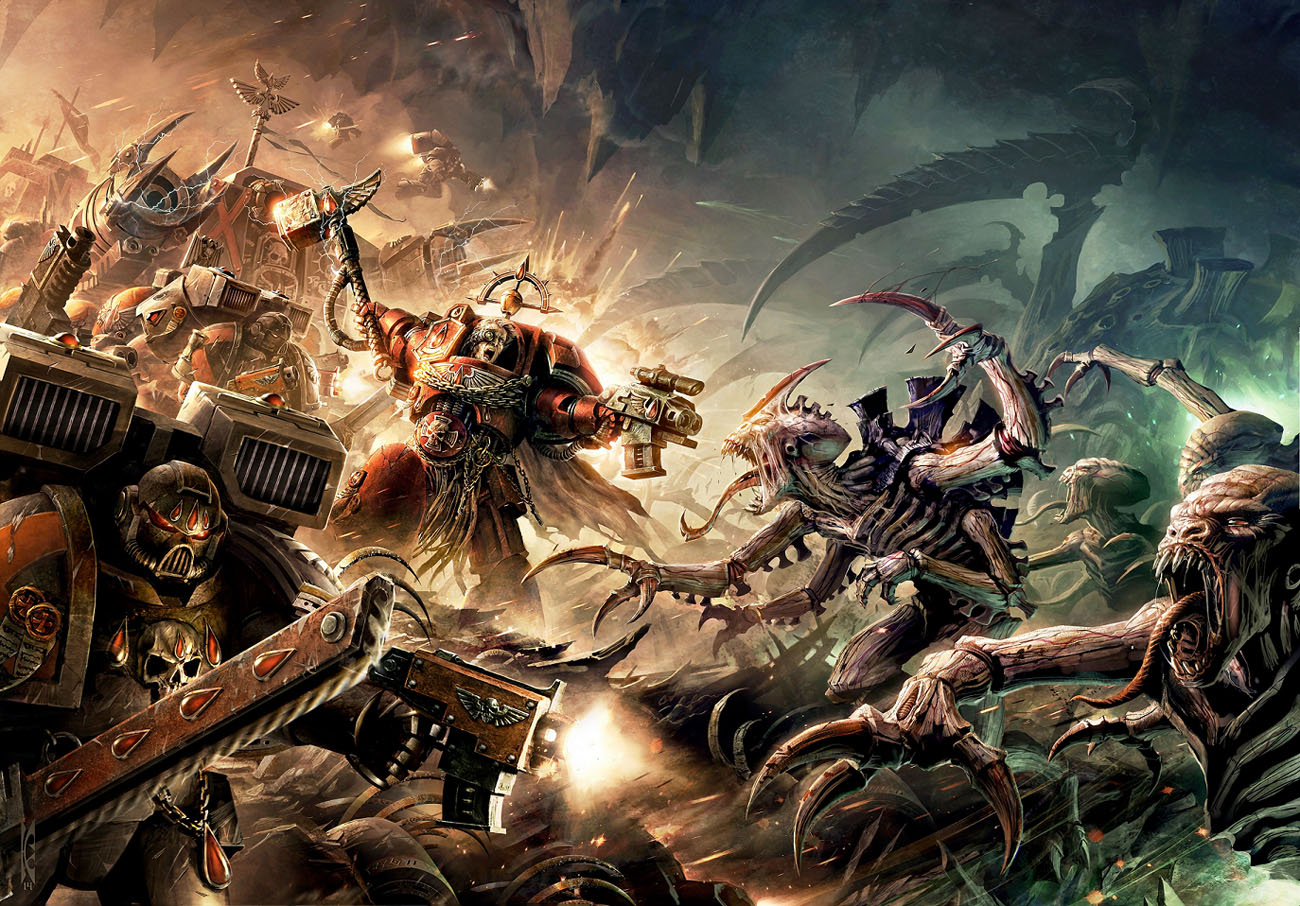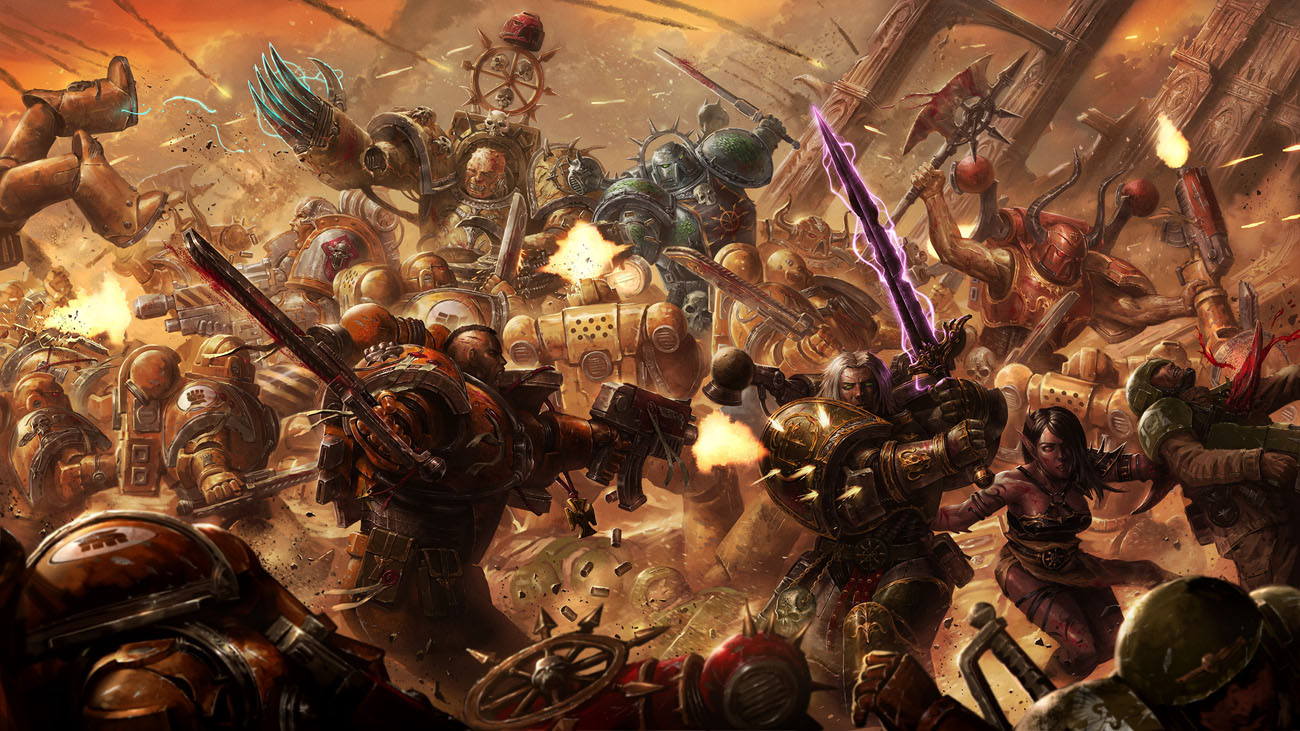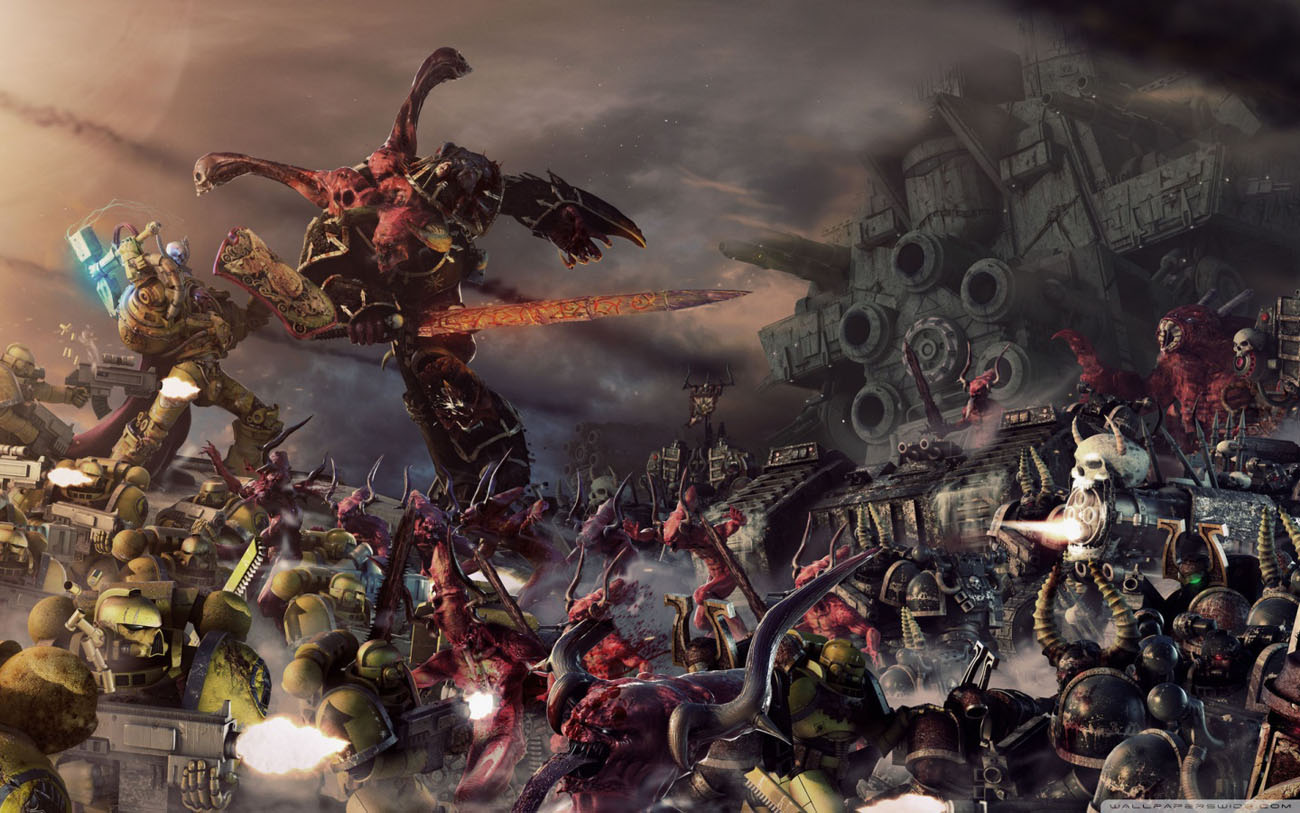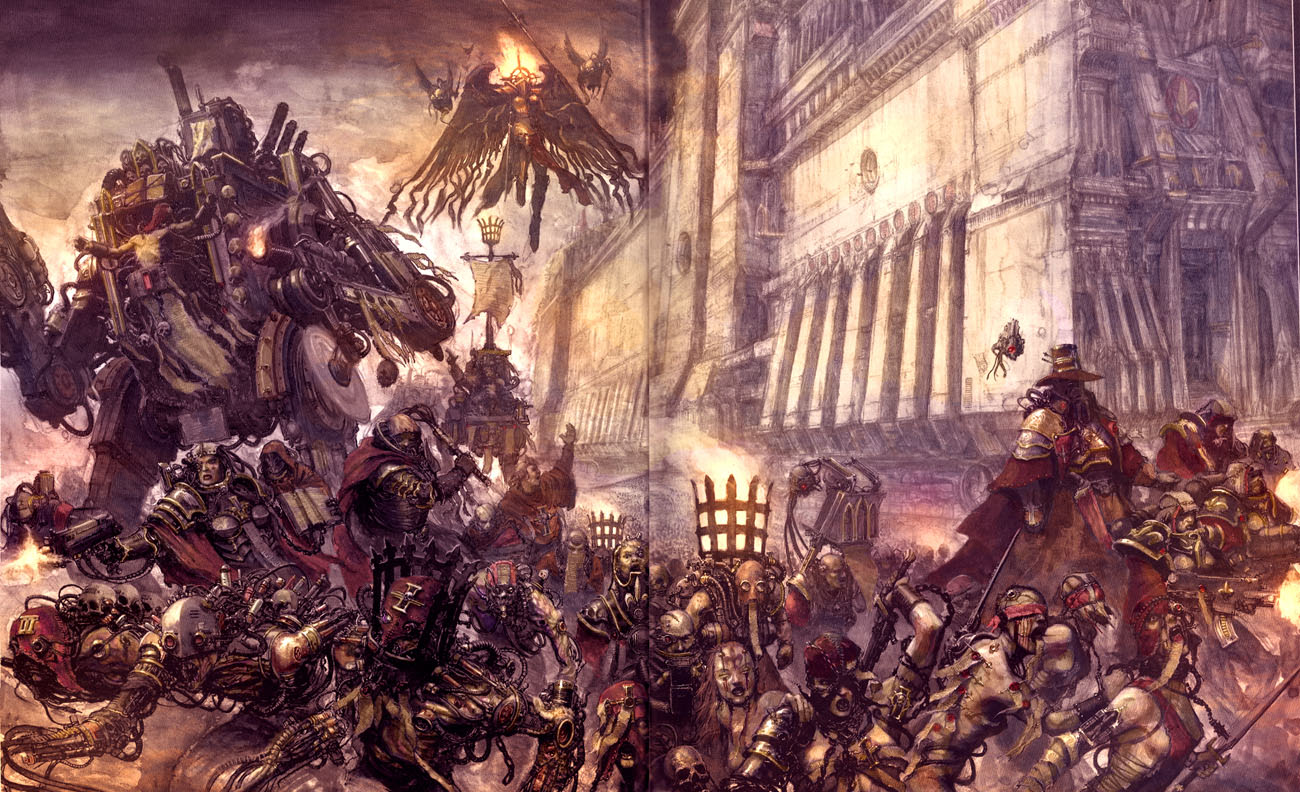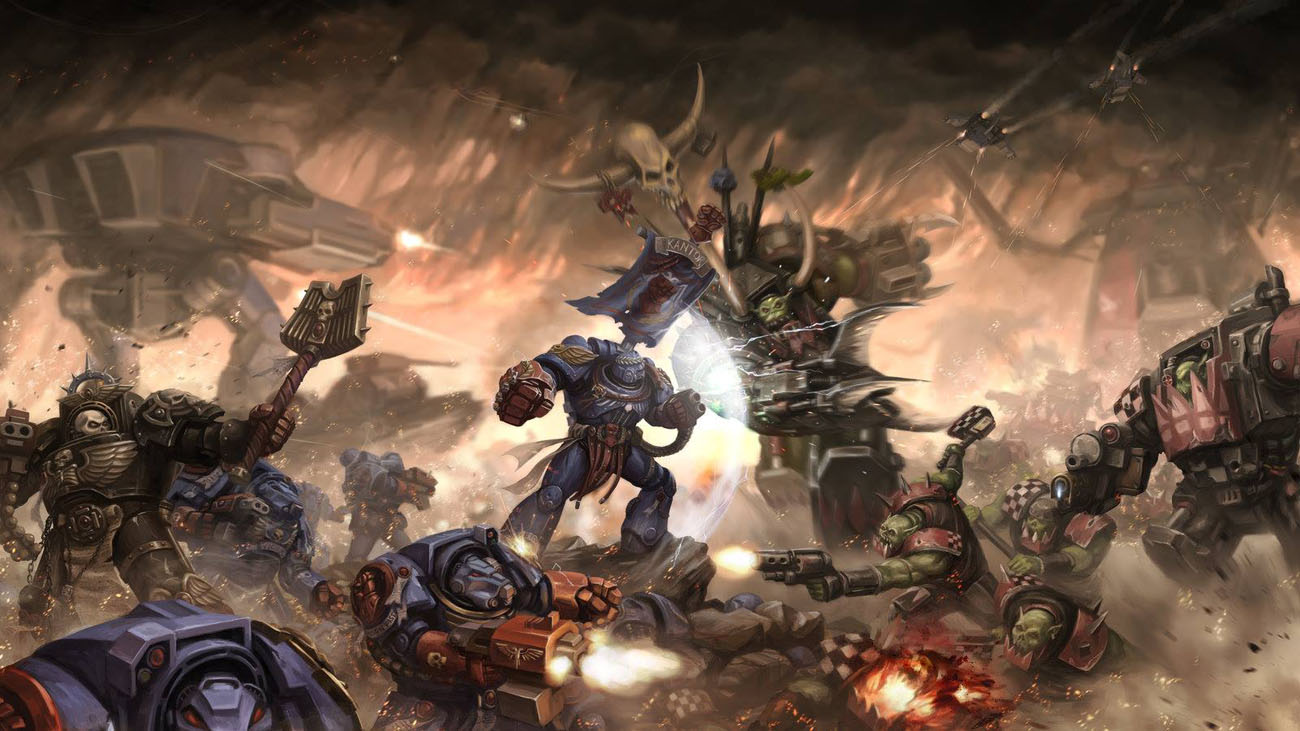Last time we discussed competitive and hobby approach to wargames. And as the comments show, most of you think that wargames are firstly a hobby, and only then – sport. Today we’ll talk about the scale of a hobby.
Sure, the difference between skirmish wargames and their large-scale counterparts is obvious. However, there are a lot of options inside wargames – like Warhammer – from 250 pts to unlimited Apocalypse. There are also different points of view among players – what form better exposes the gameplay. We’ll use the example of Warhammer 40000, since the new edition may bring some changes into the standard game form.
Let’s look into the most obvious pros and cons of different game scales.
Small – up to 1000 pts. Really popular among the newcomers. No wonder – all you need to buy is a starter set and a couple of other boxes. In such games, it’s easier to control each unit. You are not likely to forget about your special rules or to move a unit. Micromanagement is a key here. Since you have a few units, the value of each one rises and you have to plan everything thoroughly.
Another advantage is game speed. Large scale games can be exhausting. You need to keep in mind a lot of information and stand up for the long hours. 1000 pts game won’t make you tired and will save your time.
However, the time issue is a matter of your professionalism. The more experienced you are, the faster the game goes. First 500 – 750 pts games can take even 3 hours, while an experienced player can use this time to play 2000 – 2500 pts game. When you and your opponent remember all the rules by heart, and you don’t prolong the game everything gets much easier. By the way, game ethics is a topic for another discussion.
Big – from 2000 pts. What can be more epic than massive armies, marching onto each other? This is exactly the thing which makes people play wargames. Lots of units, vehicles, formations – battlefield as it is. Also, it adds tactical depth – you can afford to lose some units, maneuver and pay more attention to map control if you have a lot of units. If you have only 3, your game will be too straightforward.
But this brings the main problem – too much information to think about. You can say that it’s exactly the thing people play wargames for. But sometimes it’s hard to even for the experienced players to keep in mind all the stats and movements of their and their opponent’s units. The experience shows that while a 3000 pts game can still be a good fun, a 4000 pts one is a pain in the neck. You spend hours on packing your army, half of the day to play, and get really tired in the end – no matter what the results are.
But a large-scale game changes the balance greatly. You can easily take superheavy, huge formations and spend more points on the wargear to make your units play in their full strength. In other words – you have more ways to compensate your armies weaknesses.
This brings us to the main question – are standard formats so good as we think? 7th edition let us use superheavy and D-strength in usual games and this couldn’t leave the game scale untouched. All new Decurion-style detachments play much better from 2000 pts. Why should you take a unit only to fill in a force organization chart if you can add him effectiveness by spending more points?
It seems that our current balance problems are caused by the misunderstanding of the scale issue. If you don’t go into duplicating same units and creating meaningless death stars – the larger scale fixes a lot of balance issues. Time is not a problem, if the players are experienced. So, we need to choose the best points limit to use all the possibilities of the game and not to make the game a clumsy contraption. And maybe it’s 250 pts. 650 pts above standard 1850 is not too much to make the game harder, but this gives you enough space to improve your army. It also might be a good idea to create a separate points pool for the upgrades.
Try to play a large-scale game. Try to create a roster of your dream and then see, how much does it cost. It’s obvious that the scale is growing and we mustn’t be afraid to try something new if we don’t want to face the same problems with balance and playability.
